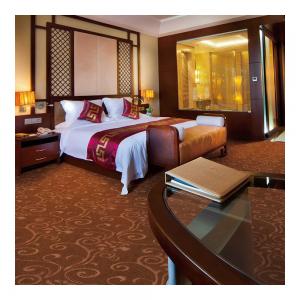
Add to Cart
Wall To Wall PP High Cut Low Pile Tufted Broadloom Carpet For Room
Specifications
| Series | Chuncheng | |||
| Recommended Uses | Family room, Hotel, Office | |||
| Fiber Material | BCF Polypropylene | |||
| Primary Backing | Woven PP | |||
| Secondary Backing | Action back | |||
| Gauge | 1/8 | |||
| Width | 4m | |||
| Color | 4 colors | |||
| Features | Stain resistant, durable, hard-wearing | |||
| Sample | Available | |||
Detailed Images

What are the differences between woven carpet and tufted carpet?
Woven carpet dominated the carpeting market from their invention until the 1950s when tufted carpeting began rising to its current dominance of about 95 percent of the wall-to-wall market.
Cost
Many factors decide the cost of both woven and tufted wall-to-wall carpeting. These include density, type of fiber (wool is still the premium material), and the variety of weave. So it is difficult to give a precise estimate of the price difference between the two methods of construction.
Construction
Looms are used to create woven carpeting in which facing (top side) yarn interlaces with the backing yarn. The little backing material is necessary, according to the Carpet and Rug Institute (CRI), but some latex coating is applied to the bottom for bulk.
Although tufted carpeting may be referred to as broadloom due to its width, it is created on specialized multi-needle sewing machines. The machines punch each tuft through the main backing fabric, which is usually a plastic, and form a loop to hold it in place. Then glue and secondary backings are applied to the main backing.
Materials
Wool and four synthetics — nylon, polyester, Olefin (polypropylene), and triexta — are the primary fibers used in wall-to-wall carpeting.
Wool is the most expensive fiber but is naturally stain resistant and flame retardant.
Nylon is one of the most popular types of carpet, due to its color range and durability.
Polyester has a wool-like appearance and is soft underfoot.
Olefin is glossy and one of the least expensive fibers.
Triexta is chemically close to polyester fiber but is more durable and resilient.
Production Line
